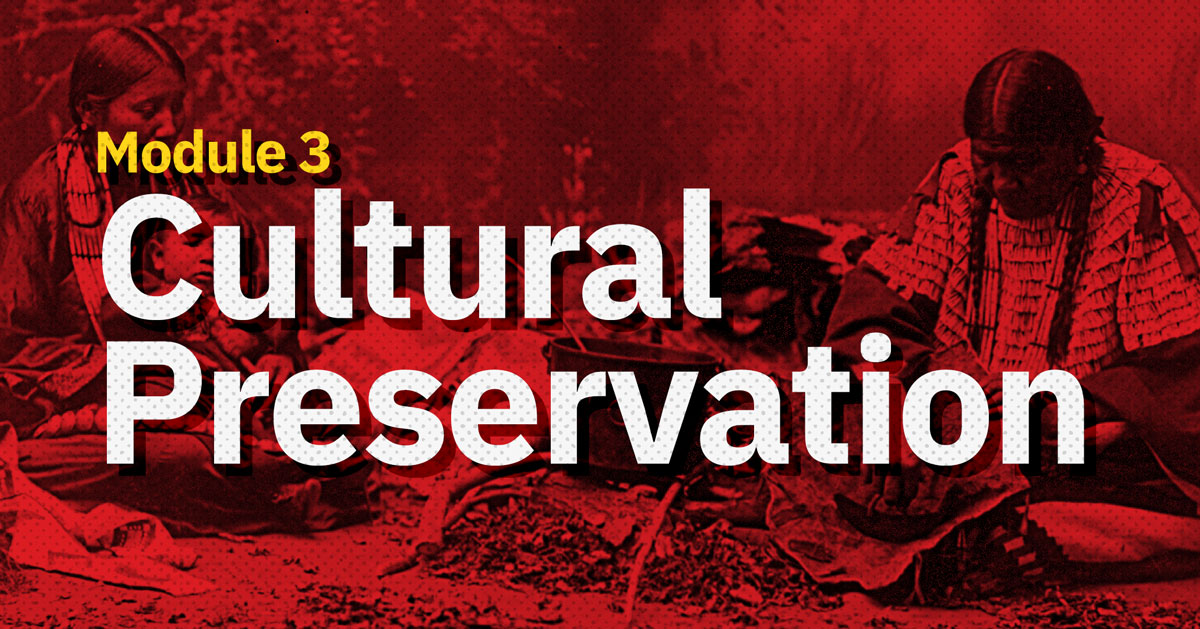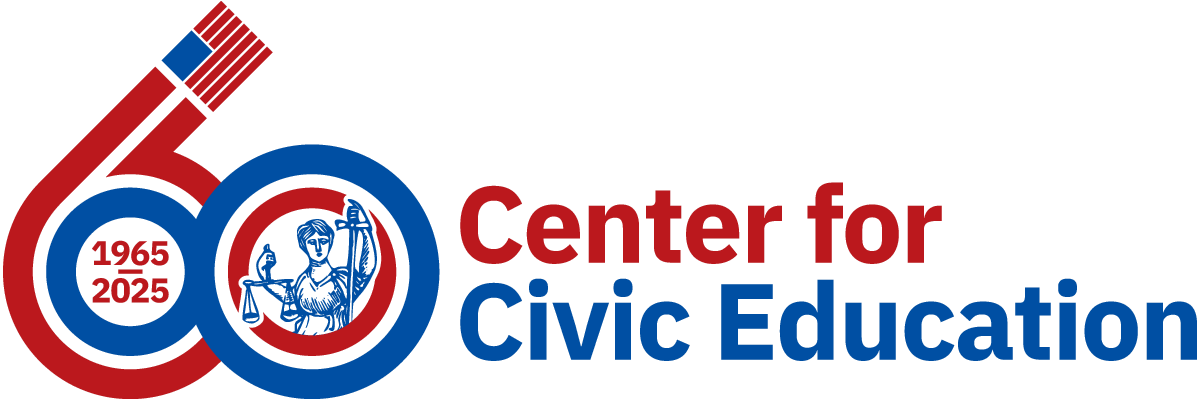
Module 3: Cultural Preservation
In this lesson, students will explore the rich cultural history of Indigenous and rural communities. This history is held in high regard, even to a sacred level, for these groups. America has been home to Indigenous people for thousands of years. Additionally, rural communities have their own traditions, but this heritage and its transmission from one generation to the next has not historically been protected.
Lesson Plan: Day 1
- Welcome students to social studies.
- Using your routine strategy for setting up groups, divide the class into small teams of three to four members.
- Distribute the Observe & Wonder images and assign each team to one of the four image sets.
- Distribute the Observe & Wonder Organizer and instruct students to work collaboratively to take a close look at their assigned images in order to complete the organizer.
- Facilitate a class discussion by asking the following questions:
- What does culture mean to you? Be sure to make connections to traditions.
- Introduce the definition of culture.
- Ask students to guess what examples of culture are being displayed.
- Ask students to provide other examples of culture.
- Examples could include, but are not limited to to following:
- Fireworks and parades on the Fourth of July
- Trick or treating on Halloween
- Super Bowl parties with food; watching the game
- Listening to special songs or singing songs as part of family or community traditions.
- Religious hymns
- Carols
- Folk songs
- Children’s songs
- Examples could include, but are not limited to to following:
- Explain to students that you will introduce another term that they might not know much about or how it connects to culture. Ask students, “What does modernization mean to you?”
- Provide the definition of modernization.
- Ask students, “Can you think of ways modernization has changed daily life and culture?”
- Using smartphones or social media platforms to celebrate birthdays or holidays
- Shopping online instead of at local markets
- Online learning
- Provide the Culture in My World handout. Ask them to list examples of how culture is reflected in each area for them:
- Family
- School
- Community
- After completing the table, answer the question at the bottom: How has modernization influenced the culture of your family, school, or community? Give a specific example for each.
- In trio teams, students share their answers.
- Ask students to share their answers with the entire class. Be sure to make connections to how culture can be impacted by modernization.
- Introduce the compelling question: “Can a community preserve its culture while embracing modernization?”
Universal Design for Learning (UDL)
- Students are introduced to the topic through visual discovery to support concept attainment.
- Allow sufficient wait time for students to formulate an opinion and offer feedback.
- Consider allowing students trio time to formulate answers.
Multilingual Learners (ML)
Social-Emotional Learning (SEL)
Civic Skills & Dispositions
Extending Learning
- As a class, define what cultural preservation is. A working definition that you can use can be found in the vocabulary section for Day 1 of this module (slide 32). Teachers may wish to provide an example of a cultural or historical site or item in their school community that has been preserved to help with concept attainment.
- Using the vocabulary slide deck, share other relevant terms that support what cultural preservation is.
- Poll the class and ask them to work in trios and think about why cultural preservation is important and how cultures and traditions are shared. Possible responses could include the following:
- Food
- Music
- Crafts
- Dance
- Language and stories
- Students will visit learning stations to explore aspects of rural cultures and traditions. Stations provided include the following:
- Divide students into either four groups (one station per group) or eight groups (create double stations to keep group sizes smaller).
- Provide an equal amount of time for student groups to visit each station. This will depend on the amount of instructional time available; it is recommended that groups spend 10 minutes at each station if time allows.
- Instruct students to start at one station; while at this first station, they should observe the topic relating to the cultures and traditions of rural communities. Student groups should engage in meaningful conversation and will discuss and take notes in the cultural preservation printable notebook, focusing on the following questions:
- What topic is the station sharing?
- What prior knowledge, if any, do you have regarding this tradition?
- What do you wonder about this tradition?
- Who started it?
- Why is it important in rural communities?
- Is it still relevant today?
- What has happened over time to this tradition?
- How is this tradition viewed today?
- What steps can be taken to culturally preserve this tradition?
- Student groups should rotate when asked to by their teacher, who is facilitating groups and acting as the timekeeper.
- All student groups will have the opportunity to visit each station.
- Ensure that each student has recorded at least three observations from each station in their cultural preservation notebook.
Universal Design for Learning (UDL)
- Provide flexible reading options, such as reading individually or with groups at culture stations.
Multilingual Learners (ML)
Social-Emotional Learning (SEL)
Civic Skills & Dispositions
Extending Learning
- Reconvene as a whole class.
- Ask the class whether they have ever visited a fair or a festival in their community.
- What traditions do the images in the provided fairs and festivals hold?
- Music and dance
- Food
- Crafts
- Games
- Powwows
- What traditions do the images in the provided fairs and festivals hold?
- Why are fairs and festivals places that communities gather to share traditions? Answers could include the following:
- A chance to show off cultural skills that they have learned from elders.
- A way to bring the community together and recall community traditions from past generations.
- A way to preserve and let others see how special and unique traditions can be.
- As a class, view the Day 1: County Fair and Festival images. The three images that will be used are as follows:
- 1907 County Fair in Minnesota
- 1936 Treasure Show of Arts, New York flier
- 1901 Harvest Home Festival in Minnesota advertisement
- As images are viewed, hold a class discussion and complete the Day 1 TACOS activity.
- In addition to answering the TACOS questions, hold a class discussion to make the following observations:
- What activities, if any, can be seen in the image that you might find today at a fair/festival/community gathering?
- Why is agriculture a focus of these images, and what is the importance of agriculture to rural communities still today?
Universal Design for Learning (UDL)
- Allow students to work in small groups to share their observations about the images before sharing with the whole group.
- Provide prompts like “I noticed that …” or “This reminds me of …” to help students engaged in conversation.
Multilingual Learners (ML)
Social-Emotional Learning (SEL)
Civic Skills & Dispositions
Extending Learning
- Using the knowledge gathered from each cultural preservation station, recall the traditions shared at the four stations that students visited.
- Reshare the definition of modernization.
- Share the list of modernized rural traditions with the class.
- Hold a class discussion regarding the ways that rural communities can bring their cultures to the forefront of modern-day life and how these cultures can be modernized for today’s world.
Universal Design for Learning (UDL)
- Allow students time to discuss in small groups before sharing with the whole group.
Multilingual Learners (ML)
Social-Emotional Learning (SEL)
Civic Skills & Dispositions
Extending Learning
- Share the TACOS image #3 with the class again.
- Discuss what the text shares about the event that the image is promoting.
- Examine what kinds of present-day fair or festival attractions are visible in the image.
- Share that in past and today, some of the best ways for rural communities to connect and share cultural activities include the following:
- Fairs
- Festivals
- Community gatherings of civic events (town-hall meetings, voting booths, community meetings, local libraries, schools)
- Community gatherings of social events (community potluck meals, events at community centers, farmers’ markets, places of worship)
- Family gatherings
- Students will create a visual representation or a brief written account of a cultural celebration of their choice in which communities gather and share/preserve rural culture as an Exit Ticket.
Universal Design for Learning (UDL)
- Provide students the option to create their visual representation digitally or by hand.
- Allow additional time for students to complete their exit ticket.
Multilingual Learners (ML)
Social-Emotional Learning (SEL)
Civic Skills & Dispositions
Extending Learning






